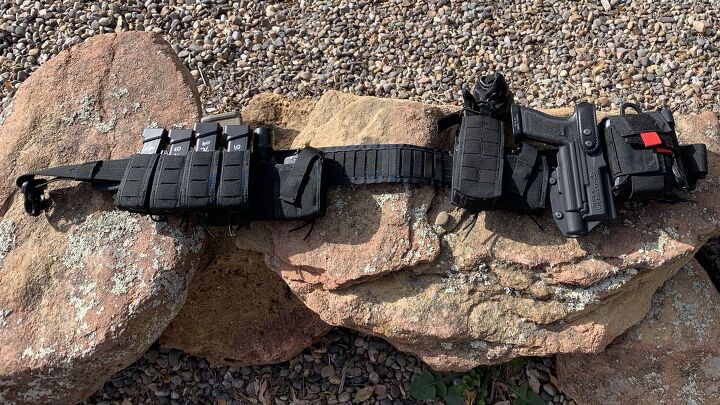My Reserve Sheriff Department is a “bring your own gear” affair (meaning that we can source the required bits from wherever we want; opposed to the issued Sam Brownes that the full-time Deputies get). I had been running HSG TACOs prior to hiring on, including on my competition rig, and so felt it was a good fit to do the same with my duty gear.
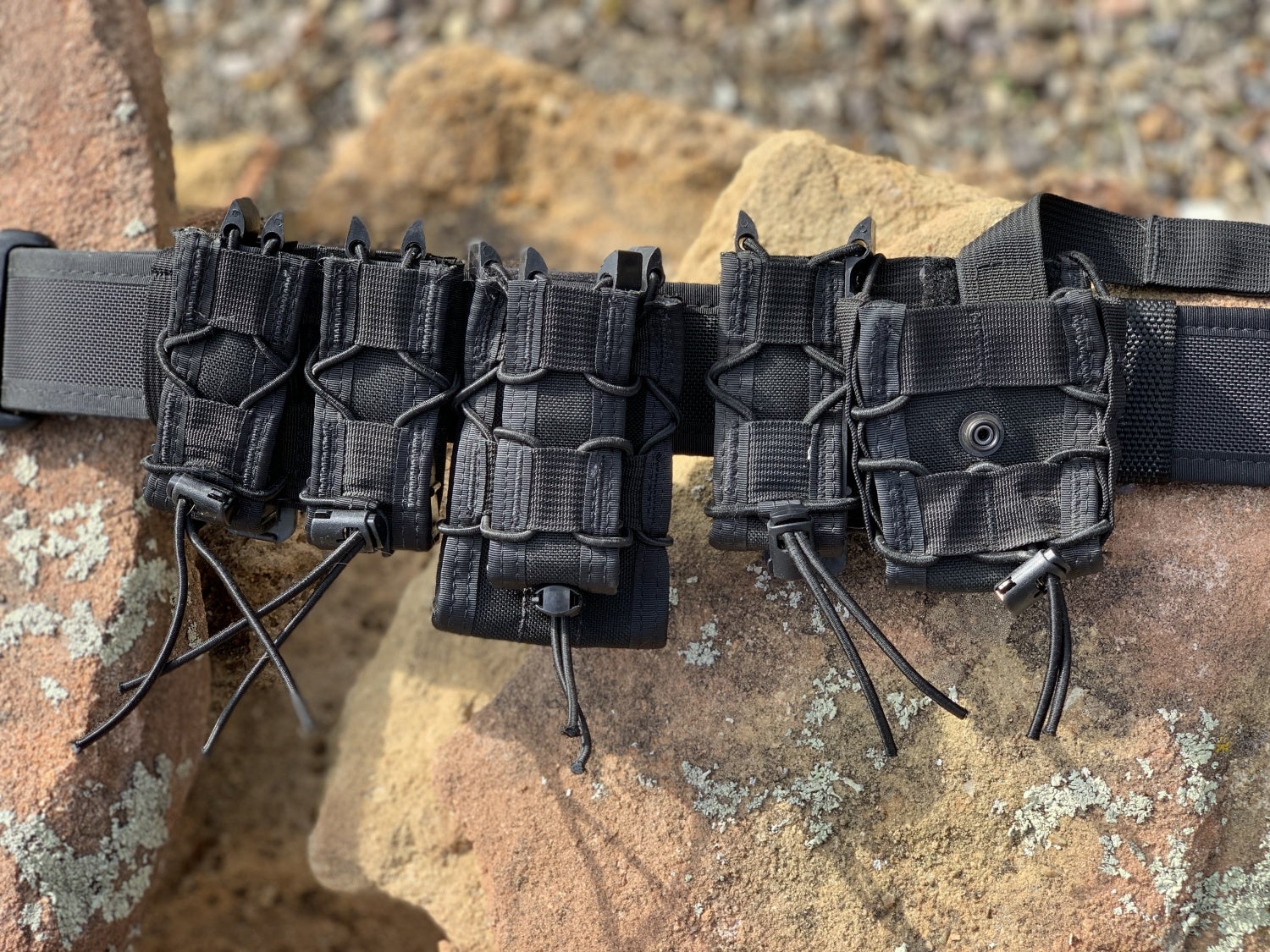
Traditional High Speed Gear TACOs (and handcuff pouch).
TFB Review: High Speed Gear: Duty Gear
At the time I purchased my gear it was the traditional style TACOs with the exposed shock cord. While the traditional TACOs have a little more “tactical” look, it was acceptable since our Reserves’ uniforms are utilities. Through a mutual contact, HSG offered to send me their “newish” Duty line to swap out and try. I took some pictures of my existing set up and they sent me all of the same pouches so I could duplicate my rig. They also offered to send out their Cop-Lock Duty Belt and Duty Grip Padded Belt.
A couple of months prior I had also gotten a Comp-Tac Level 2 International Duty Holster. We were coming up on requalifications so it was a perfect time to change out the gear–I would have a few weeks to get used to the gear while doing my weekly training and could then qual while wearing it.
Construction
High Speed Gear’s Duty line maintains the same construction and functionality as the originals with the exception that the shock cord is concealed, giving the overall appearance a cleaner look.
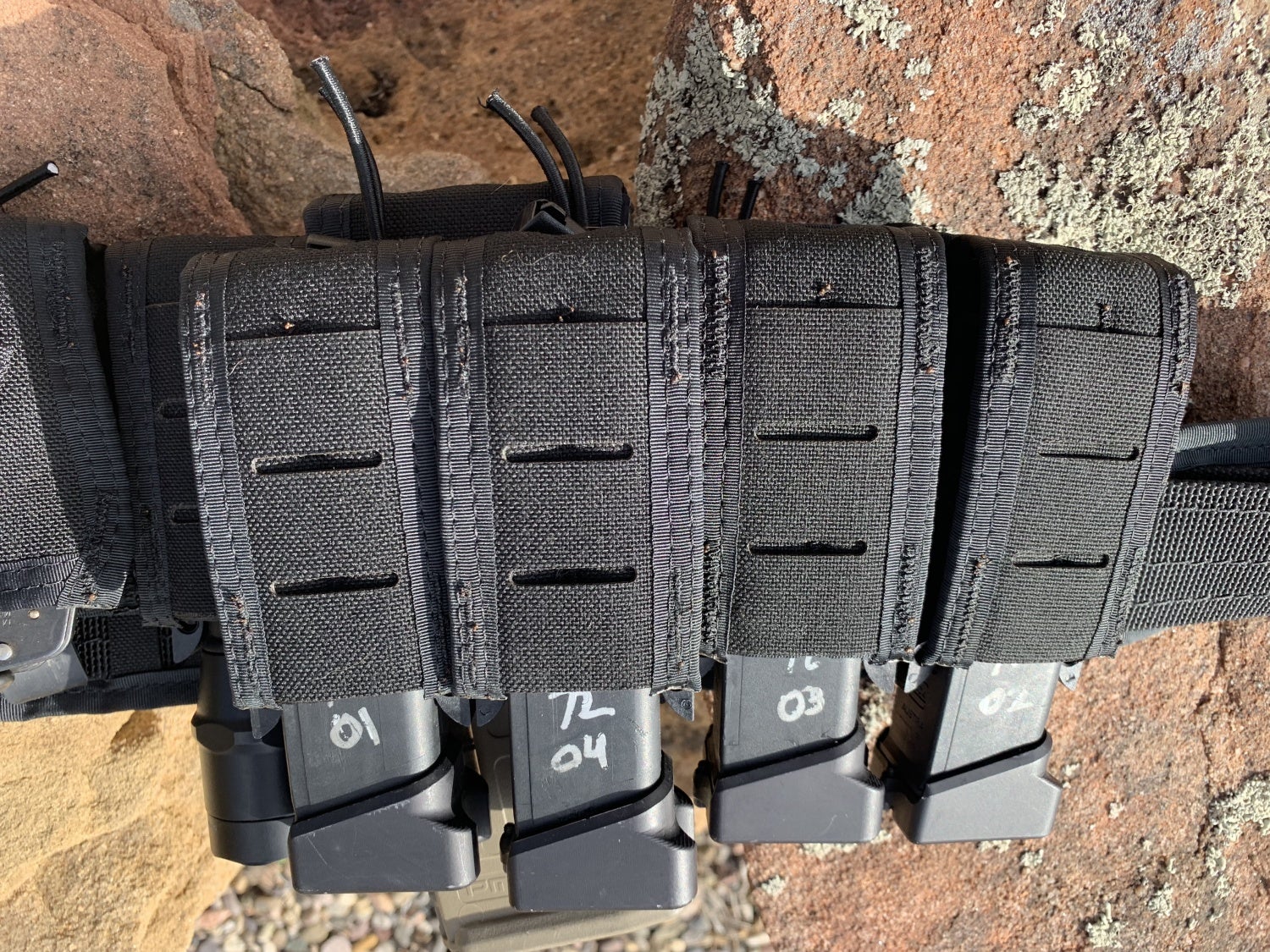
The Duty line from High Speed Gear has a much cleaner look without sacrificing any of the functionality. You can still attach additional pouches to the outside and adjust the internal tension.
The “Duty” line of gear is made from the same 1000D Cordura laminate as the regular line, along with shock cord for adjustment, and the internal polymer brackets for retaining gear (on the “magazine” TACOs). The primary difference is that the Duty gear has the shock cord internally threaded and the outside is slick. HSGI has both covered and uncovered variants of many of the pouches (meaning a full top that wraps over the pouch and secures on the front). Personally I run the uncovered on my belt.
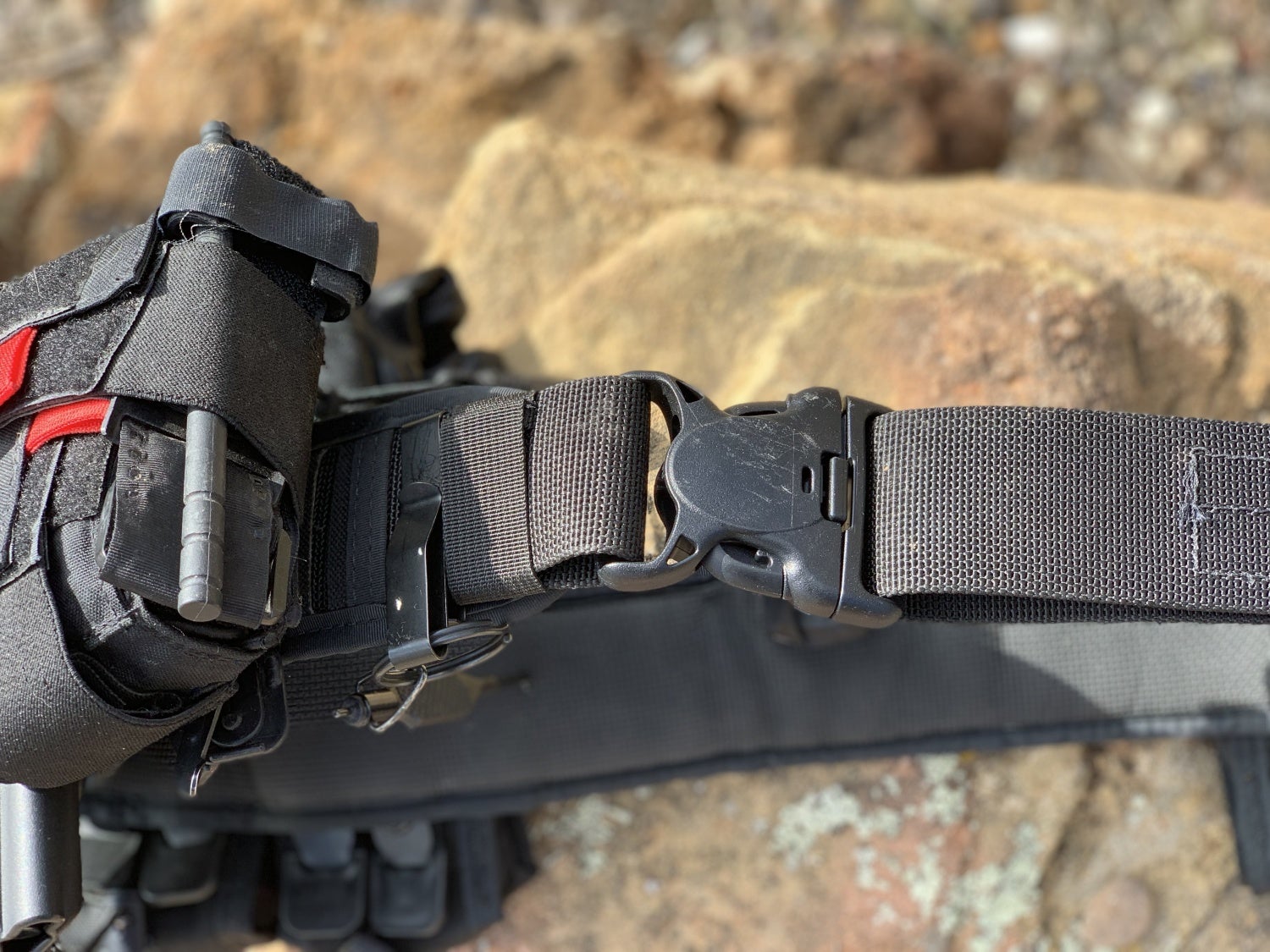
Cop-Lock Duty Belt with the “third” locking mechanism—the button in the middle of the body.
HSGI sent me their Cop Lock Duty Belt to use. It is pretty basic 2” wide duty belt, made of SCUBA Nylon (stiff enough to hold lead weights), and features a buckle with a third locking mechanism so it cannot be accidentally released.
The Duty-Grip Padded Belt is also primarily constructed of HSGI’s proprietary 1000D Cordura laminate (same as the pouches). The components are laser cut giving really clean edges. The inside is a padded neoprene with some additional grippy texturing (that is a technical description I added). It is 2.75-inches wide and will accommodate a belt width of 2-inches. The internal belt can be really anything you want to run—you do not need a inner hook and loop liner as it threads through the body of the Padded Belt. The outside of the belt has vertical strips that are 0.75-inches wide with a spacing of 0.25-inches between them. You can thread your internal belt above or below any of the strips that you want, effectively creating a section for items that keeps them in place.
Observations
I was initially very skeptical of the padded belt. I have always run a hook and loop liner belt mated to a duty belt and secured with keepers. The idea of having a free floating belt was a little anxiety causing. I will confirm, though, that the belt stays in place very well. From numerous movements in and out of the vehicle, to vigorous movements while performing unintended cardio, the entire rig stayed in place and did not shift location on my waist.
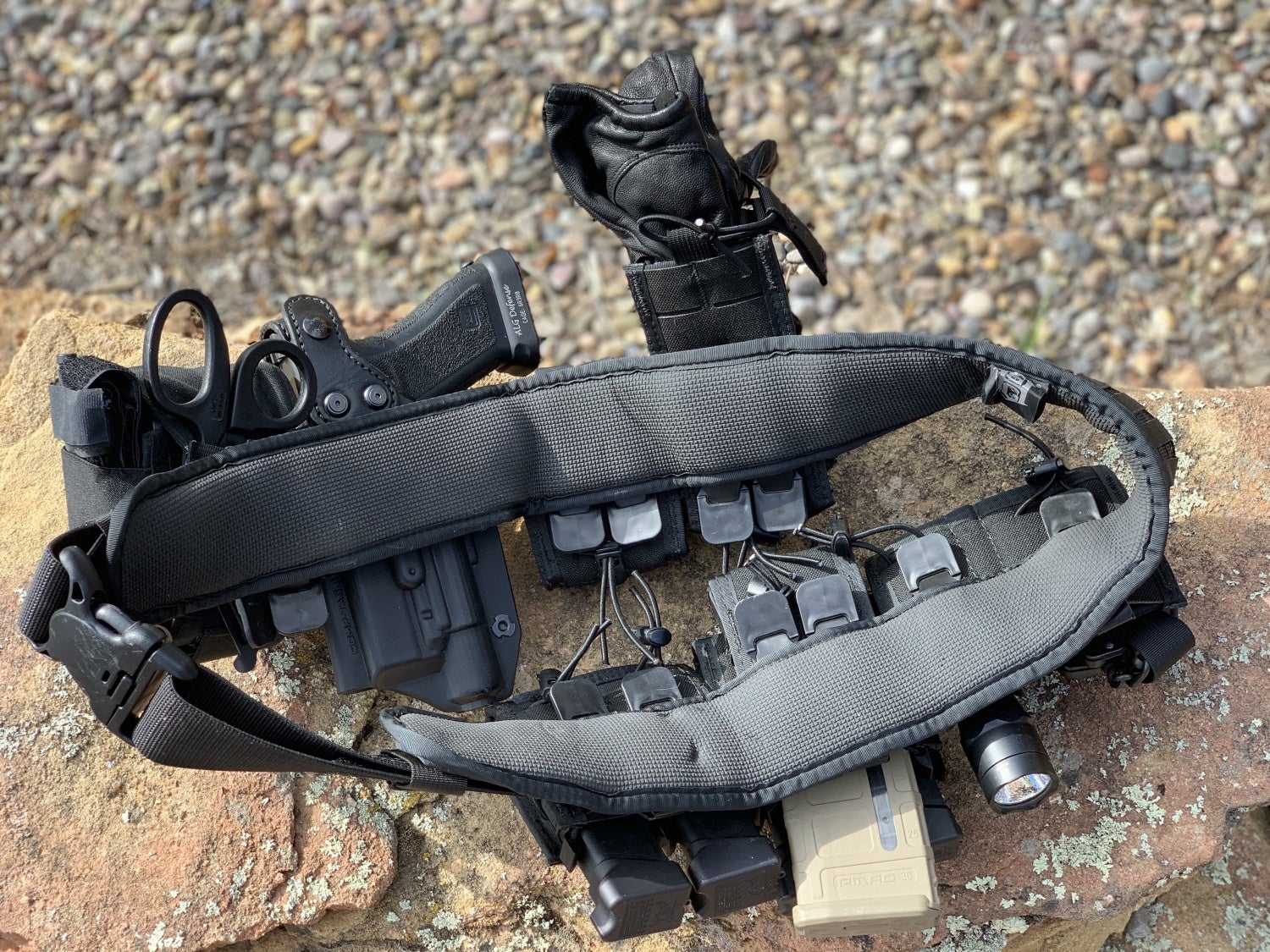
The padding on the belt is super comfortable and the grippy texture held the belt in place without the need for keepers.
The padded belt was also much more comfortable than anything else I have worn. It was easy to put on and take off too. I didn’t have to deal with making sure the hook and loop was lined up, nor attach any keepers. Not that those things are a huge deal, but it was nice to just put it on and take it off. Fortunately/unfortunately I did not get the chance to roll around on the ground with the gear, and I cannot speak to how well the belt would stay in place under that kind of stress. I imagine it would probably shift a little bit upwards worst case. HSG does offer Belt Retention Straps if you are concerned (or if your Department mandates their use).
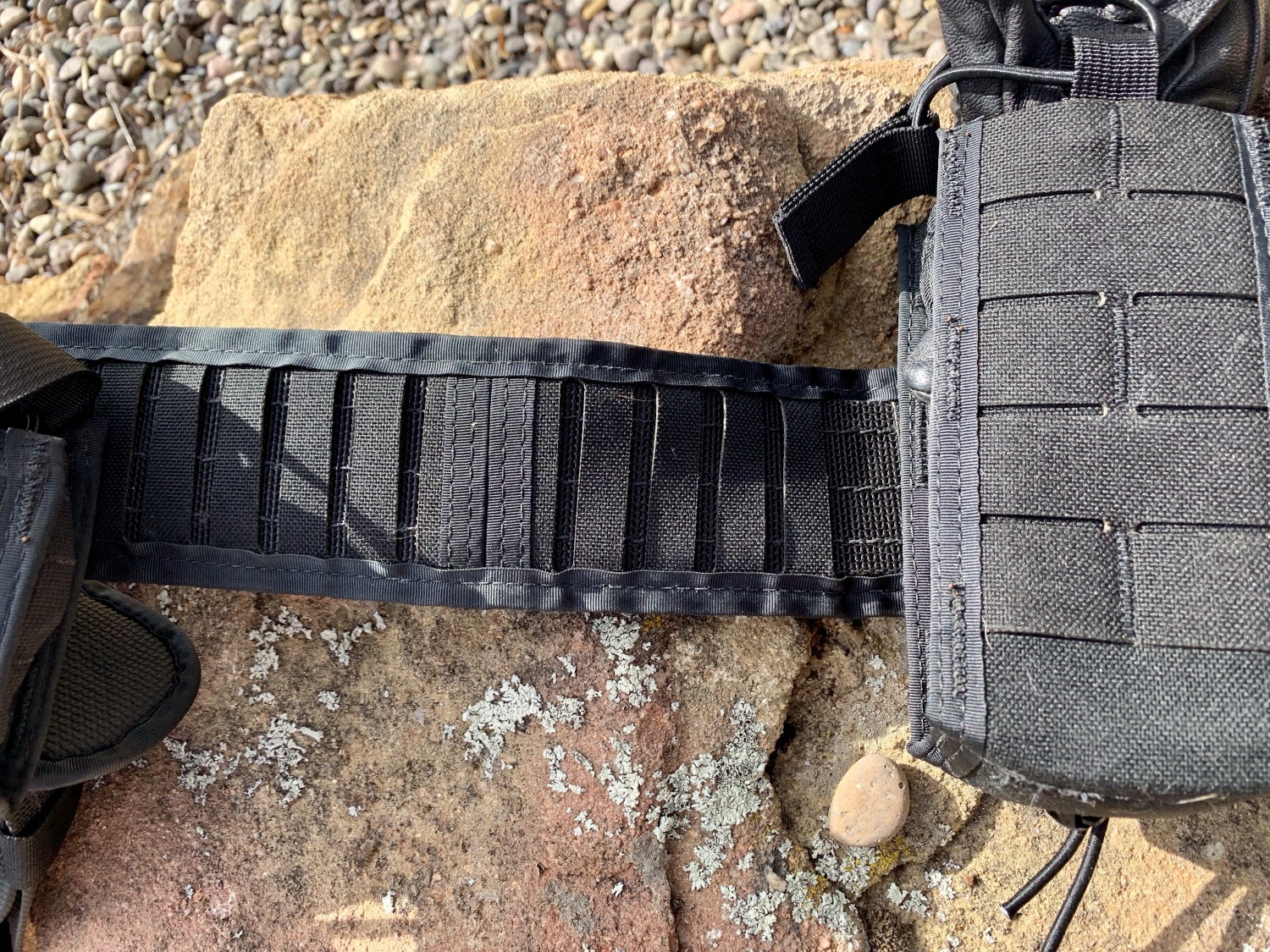
The strips on the Padded Duty Belt allow you to precisely place your gear and keep it in place. Warning: setup takes some time.
The real genius of the system is the vertical strips. You can fairly precisely position your pouches by threading the belt to create sections that are bracketed by strips above the belt. This makes it so the pouch cannot slide forward or rearward of the strips, and keeps the pouches where you want them.
The pouches are pretty much like their original design counterparts—aside from looking a little cleaner and not having exposed shock cord that could snag on something.
Without starting a religious war over holsters, my view is that the best holsters are full Kydex (or other rigid polymer). The Level 2 International Duty Holster has an all Kydex body with a leather retention strap (and snap). It is specific to your pistol and configuration even down to the generation of weapon light (if you run one). The holster worked well and I never had to fight with it to get it to work. I did need to train a bit with it as previously I had run a style with a spring loaded hood, and so had to work with the mechanic of manipulating the snap with my thumb to release the retention strap. It took maybe 10 repetitions to be proficient with it. I did all of the standard upside-down shake tests and the gun was secure. It has tension screws so you can adjust the fit of the holster to the gun—I had to loosen mine a smidge for my own preference.
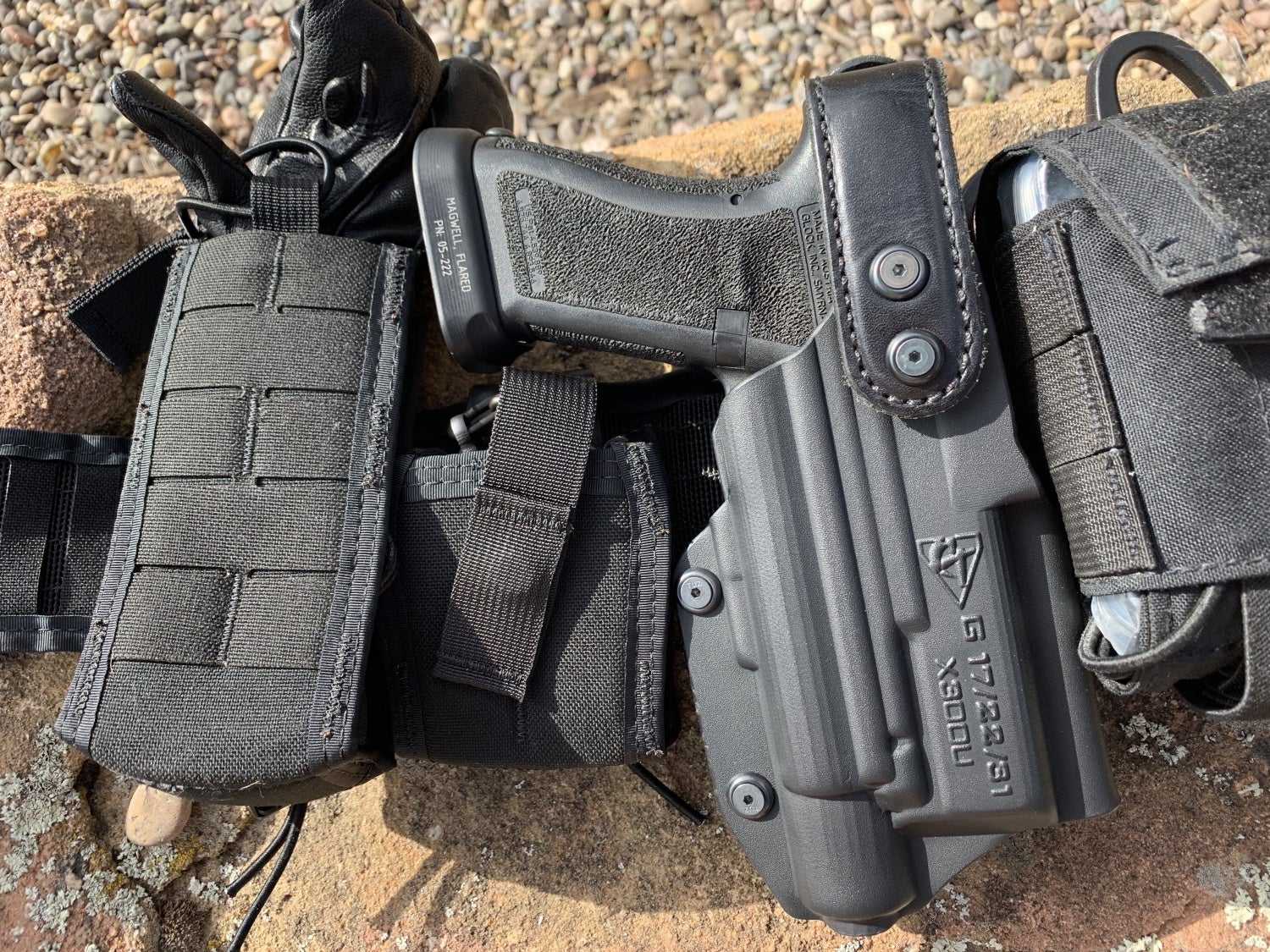
The configuration of the holster is clearly imprinted on the side so there is no question. This fits my G17 with X300u. Also note the retention strap—it is well made and very solid.
My only concern with the holster is the retention strap. I personally do not like having components that cross over the well where the pistol goes. In this case you have the leather strap. Now, it is not low enough to be in the path of the trigger, but I just do not like obstructions that cover the opening of the holster. Spring loaded hoods are my cup of tea when I have to use a retention holster. I never had a problem with the strap—I just, as a matter of preference, do not like that style.
Just as with the Padded Belt, no one (thankfully) attempted to relieve me of my sidearm during any of my shifts so I cannot speak to how effective the holster would retain a pistol. I did, however, do a couple of hours of retention training, and the holster performed exactly as expected of a Level 2.
Finis
I would guess that most people that run TACOs love them. I’ve been using them since just before the Mayan calendar was supposed to end and herald the Apocalypse. No one I know really have any complaints either. The worst thing is that new pouches can have “snug” webbing on the back which can make the first couple of installations a bit lengthy and stressful to your fingertips.
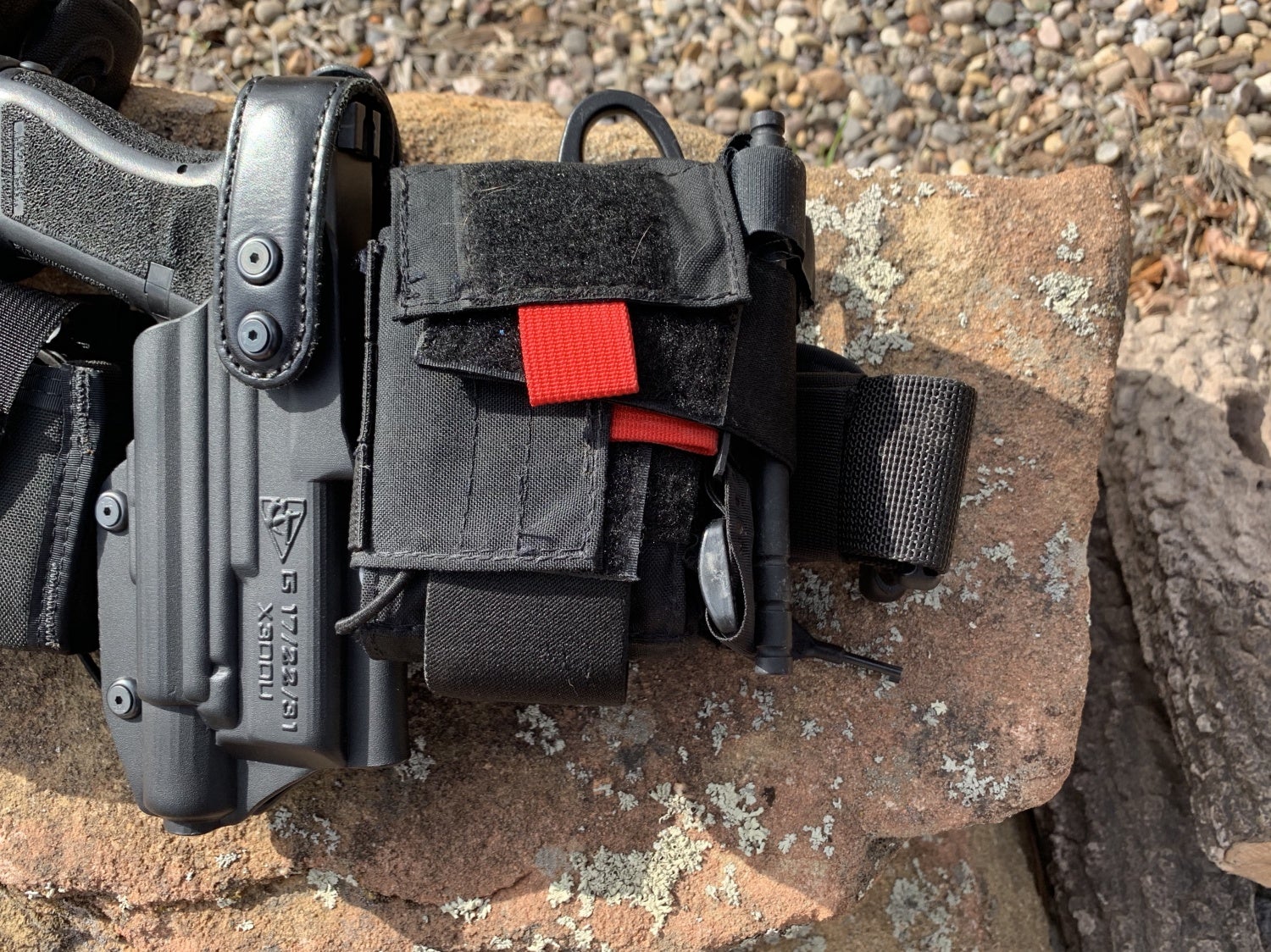
I run their “On or Off Duty Medical Pouch”. It holds everything I need for a quick blowout kit without being overly bulky.
There are not a plethora of choices when it comes to Level 2 Retention Holsters for a Glock 17 with Surefire X300u. The International Duty from Comp-Tac works well and I didn’t have any problems with it. It held my gun and allowed me to reholster without problems through a number of practice session. As I mentioned above, I don’t personally like the style of retention strap, but I know other who do (and that also hate hoods) so YMMV.
The Padded Belt performed very well and was much more comfortable than my original belt, but, again, I did not go to the ground with it on any of my shifts. The organization system far outshines anything else I have used, and the belt is really one of the most comfortable belts I have worn.
In general I am a fan of High Speed Gear’s products and have been using them for quite some time. I can’t imagine using any other type of pouches—the TACOs blend a good mix of compactness and ability to adjust retention. The Padded Belt is awesome, and I will likely switch my competition rig out to use one as well.
Let us (and HSGI) know if the comments what you think of their gear, and if you have used it before.
You can see the whole line of Duty Gear at: https://www.highspeedgear.com/dutygear.html. The Padded Belt can be found at: https://www.highspeedgear.com/hsgi/33DG-33DG.html. The Holster can be found at: https://comp-tac.com/international-duty-holster-level-2-thumb-break-comp-tac/
 Your Privacy Choices
Your Privacy Choices
